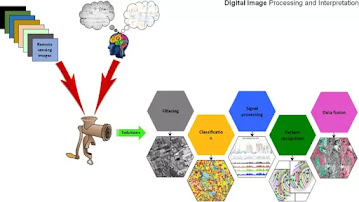Image Processing In Industrial Automation
Image Processing In Industrial Automation
Introduction:-
Fourth industrial revolution has revolutionized the traditional manufacturing and industrial practices. It has created an era of cyber physical systems with collaboration of human intelligence, machine learning, artificial intelligence, robotics, nanotech, IOT and many more. From human assisted automation to completely inhuman automation industries have come a long way. There is hardly any manufacturing process that is conceivable without imaging, Industrial Image processing works as chief technology in industrial automation.
Hardware:-
Hardware to implement image processing system is a network interface between manufacturing process control system, main processing computer containing image processing software ,cameras and image processing hardware like Image grabber and video composite circuit, data processor and system controller and PC expansion card.
Important Image Processing techniques used in industry autmation:-
1. Image representation
2. Image preprocessing
3. Image enhancement
4. Image analysis
5. Image compression
It's not possible to write
about every application of image processing in Industrial automation, so for In this blog we will restrict to image processing in automobile industry automation.
Tesla which is largest electric motor company in world has Gigafactory located in Texas US. This factory is worlds most automated factory and image processing plays an important role in this automobile factory also. Now let’s understand how image processing is implemented in Gigafactory ?
High resolution cameras are installed at almost every step, in manufacturing assembly line to ensure quality control. High-speed cameras enable detailed fault analysis, especially in very fast-moving manufacturing processes. In the case of high-speed processes, the cameras superiority is obvious. But even in the case of mainstream manufacturing speeds, quality and process control is increasingly being transferred to imaging systems. Image processing ensures brilliant surfaces around the clock, micrometre-accurate assembly tolerances and defect-free circuits on the increasingly prevalent chips & micro controllers.
Not just in fault
detection also image processing plays important role in production and research
purpose some of the main uses of image processing in production phase are as
follows:-
1] Using image processing
systems Engine developers are
gaining insights into injection and combustion processes that are hidden to the
human eye.
2] Aerodynamic engineers
use image processing systems in wind tunnel to render even the slightest turbulence
visible and capable of analysis.
3] In crash laboratories image
processing unfold the aspect that are not visible in normal image and this is
used to increase safety in the vehicles.
Image processing has not just established itself in automotive
production. But in autonomous vehicles also, Reversing cameras protect against
car body damage. At night, infrared cameras warn of unlit obstacles and
pedestrians wearing dark clothing on the road. Stereo cameras and laser sensors
measure the distance to vehicles driving ahead, detect animals suddenly running
out into the road, thereby laying the foundation for cruise control systems and
emergency brake assistants.
Conclusion:-
Image processing plays an
important role in automobile industry as there is not a single manufacturing
process in automation industry which is conceivable without imaging hence image
processing has a huge importance in industry. Different image processing
techniques are used to perform different automation tasks. Manufacturing industry
has undergone a drastic change from using 2D image processing to currently
using 3D image processing techniques and this has revolutionized the
automation.





Very Informative 👍
ReplyDeleteGreat, Informative.
ReplyDeleteBuy PVR
ReplyDeleteMind boggling Blog 💥💥
ReplyDeleteGreat, easy to understand..✨
ReplyDeleteNice,very informative..
ReplyDeleteIncredible 👌👌
ReplyDelete